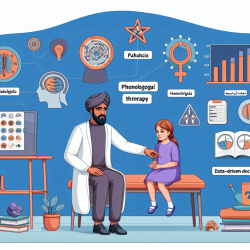Introduction
The COVID-19 pandemic has profoundly impacted the mental health of adolescents, as evidenced by a recent study published in the Canadian Medical Association Journal. This research highlights a significant increase in hospital admissions for suicidal ideation, self-poisoning, and self-harm among adolescent females in Canada during the pandemic. As practitioners, understanding and implementing the findings of such research can be pivotal in improving mental health outcomes for young individuals.
Understanding the Research
The study conducted a retrospective analysis using data from the Canadian Institute for Health Information, focusing on adolescents aged 10–18 years. It revealed that the average quarterly percentage of hospital admissions for suicidal ideation and self-harm increased significantly during the pandemic, particularly among females aged 10–18 years. The research underscores the necessity for targeted public health policies to mitigate the pandemic's impact on adolescent mental health.
Key Findings
- The percentage of hospital admissions for suicidal ideation and self-harm among adolescents increased from 7.18% during the prepandemic period to 8.96% during the pandemic.
- There was a significant increasing trend in hospital admissions for these issues, especially among females aged 10–14 years and 15–18 years.
- The study highlights the importance of understanding demographic-specific trends to allocate resources effectively.
Implications for Practitioners
As practitioners, it is crucial to leverage these findings to enhance therapeutic strategies and interventions. Here are some actionable steps:
- Data-Driven Interventions: Utilize data to identify at-risk groups and tailor interventions accordingly. This could involve more targeted support for adolescent females, who have shown a significant increase in mental health issues during the pandemic.
- Enhancing Access to Services: Advocate for and implement policies that ensure continuous access to mental health services, even during disruptions like a pandemic. Online therapy services, such as those provided by TinyEYE, can play a crucial role in maintaining access.
- Collaboration with Schools: Work closely with educational institutions to integrate mental health support within the school environment, ensuring that students have access to necessary resources and support systems.
- Promoting Mental Health Awareness: Engage in community outreach to raise awareness about the signs of mental health issues and the importance of seeking help early.
Encouraging Further Research
While this study provides valuable insights, it also highlights the need for further research to understand the long-term impacts of the pandemic on adolescent mental health. Practitioners are encouraged to engage in or support research initiatives that explore these areas, contributing to a more comprehensive understanding and better outcomes for adolescents.
Conclusion
The increase in hospital admissions for suicidal ideation and self-harm among adolescents during the COVID-19 pandemic is a call to action for practitioners. By implementing data-driven strategies and advocating for robust mental health policies, we can work towards better mental health outcomes for adolescents. To read the original research paper, please follow this link: Emergency department visits and hospital admissions for suicidal ideation, self-poisoning and self-harm among adolescents in Canada during the COVID-19 pandemic.










